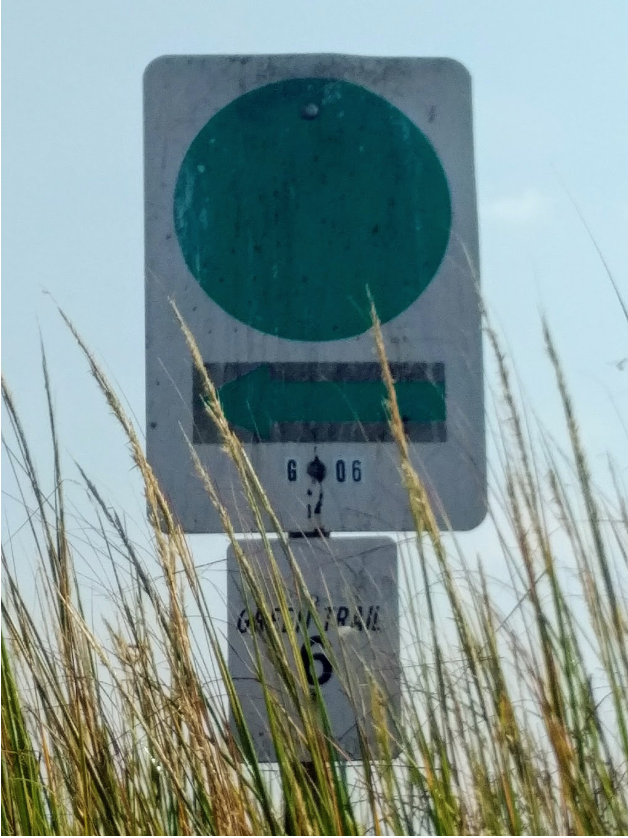Blog Insights
The Need for Multiple Navigation Paths on Digital Properties
While online navigation is often designed with the intention to guide a user through the most logical and straight-forward path, each user is unique and will search and navigate slightly or very differently from the main path you’ve created. While I wrangle with and design for this reality in my day-to-day, a recent canoeing trip reminded me of just how necessary it is to provide not one, but multiple paths for users to make their way through and across digital properties.
Last month I grabbed a few days off, and, as I am wont to do at such times, I put my canoe in Chesapeake Bay and went paddling. I was trying to briefly unplug from the digital communications world, but, there among the egret-clad creeks of Janes Island State Park, MD, I found a parable: that is, a parable from a paddle. Navigating the waterways there held the same limitations as a client’s proposed design for navigating a digital report.
 It’s a wonderful solution, and I’m sure the trails bring much more access to the wonders of the island, but they have one notable downside: they only run in one direction.
Signs like the one above work great, if you have chosen to paddle in the defined direction of that trail. These are waterways, though. There is no reason for one direction to be the defined way to go; in fact, with wind blowing as it was that day, I judged the “backwards” direction to be more advantageous. In going this direction, I found it much harder to find my way, as I had to find signs in unexpected places and think backwards from them. It was doable, but definitely a sub-optimal implementation of a good idea.
It’s a wonderful solution, and I’m sure the trails bring much more access to the wonders of the island, but they have one notable downside: they only run in one direction.
Signs like the one above work great, if you have chosen to paddle in the defined direction of that trail. These are waterways, though. There is no reason for one direction to be the defined way to go; in fact, with wind blowing as it was that day, I judged the “backwards” direction to be more advantageous. In going this direction, I found it much harder to find my way, as I had to find signs in unexpected places and think backwards from them. It was doable, but definitely a sub-optimal implementation of a good idea.
The parable: a one-way water trail
Janes Island is a pristine tract of woods and salt-marsh off the far southern end of Maryland’s Eastern Shore. It is, in fact, actually many islands, as the marsh is cut with creeks, small and large, creating myriad passageways through the seeming whole. It’s stunning — a riot of shore birds, marsh plants, fish, and other Bay creatures. It absolutely beckons the small boater to explore it. If you have ever paddled through a big marsh, though, you know it is pretty easy to follow a promising passage and end up at a dead-end of mud. Channels twist and turn and all look the same, and a large opening can quickly fade into a narrow backwater. To address these risks, the wise park managers created water trails: defined routes through the island marked by prominent signs. It’s a wonderful solution, and I’m sure the trails bring much more access to the wonders of the island, but they have one notable downside: they only run in one direction.
Signs like the one above work great, if you have chosen to paddle in the defined direction of that trail. These are waterways, though. There is no reason for one direction to be the defined way to go; in fact, with wind blowing as it was that day, I judged the “backwards” direction to be more advantageous. In going this direction, I found it much harder to find my way, as I had to find signs in unexpected places and think backwards from them. It was doable, but definitely a sub-optimal implementation of a good idea.
It’s a wonderful solution, and I’m sure the trails bring much more access to the wonders of the island, but they have one notable downside: they only run in one direction.
Signs like the one above work great, if you have chosen to paddle in the defined direction of that trail. These are waterways, though. There is no reason for one direction to be the defined way to go; in fact, with wind blowing as it was that day, I judged the “backwards” direction to be more advantageous. In going this direction, I found it much harder to find my way, as I had to find signs in unexpected places and think backwards from them. It was doable, but definitely a sub-optimal implementation of a good idea.
